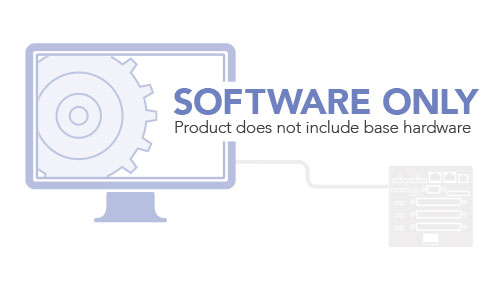Get in Touch
UEI Europe Office
+49 40 63698136
Email EU Sales
General
(508) 921-4600
Email Sales
Email Support
Click here for local offices and distributors.
UEIPAC Linux Programmers Toolkit Versions
Linux TK, Linux
Features
- Choose from the UEIPAC LINUX Programmer’s Toolkit for PPC Based UEIPACs or for ARM/SoloX (TK-SX).
- UEIPAC-LINUX-TK is for UEI PowerPC -02/-03 CPUs.
- UEIPAC-LINUX-TK-SX is for UEI ARM/SoloX -11/-12 CPUs.
- UEIPAC-LINUX-TK-ZQ is for UEI Zynq -33/-3A CPUs.
- UEI will contact you directly after the purchase with toolkit download instructions.

The UEIPAC Linux Programming Toolkits provide the software tools necessary to create an embedded application targeting Linux on either the UEIPAC-02/-03 processors, -11/-12 processors, or its -33/-3A processors. Once the application is developed it will run directly on the UEIPAC.
You must purchase one copy of the UEIPAC Linux TK, UEIPAC Linux TK SX, or UEIPAC Linux TK ZQ before you are able to write programs for the UEIPAC. However, you need only purchase one package regardless of how many UEIPAC Cubes you are writing programs for or are planning to deploy.
PowerPC:
The programmer’s toolkit provides the software tools necessary to create an embedded application targeting Linux on the UEIPAC’s PowerPC processor. This includes most popular versions of Linux such as Fedora and Suse. The development environment runs on a Linux PC or in the Cygwin environment on a Windows PC. The UEIPAC is also supported by the popular Eclipse IDE. Applications requiring hard real-time functionality are possible using the Xenomai 3.05 Linux extension or the Real-Time Linux capability included in the 4.4.115 series kernel. The RT Linux kernel must be used for proper IEEE-1588 performance.
- The UEIPAC development environment includes:
- GCC 6.3.0 based cross-compiler for applications targeting the UEIPAC PPC module
- GNU toolchain tools such as make
- Standard Linux libraries such as glibc
- UEIPAC library for the various I/O boards/devices
SoloX:
- Uses Yocto Linux distribution: Yocto version 2.7 (Warrior), Linux kernel 4.9.88, PREEMPT_RT patch for real-time support
- Program in standard C/C++
- Eclipse IDE support
- Develop on Linux PC or Windows PC / Cygwin environment
The programmer’s toolkit provides the software tools necessary to create an embedded application targeting Linux on the UEIPAC’s ARMv7 32-bit processor. This includes most popular versions of Linux such as Fedora and Ubuntu. The development environment runs on a Linux PC or in the Cygwin environment on a Windows PC. The UEIPAC is also supported by the popular Eclipse IDE. Applications requiring hard real-time functionality are possible with the Real-Time Linux capability included in the 4.9.88 series kernel.
The UEIPAC development environment includes:
- GCC 8.3 based cross-compiler for applications targeting the UEIPAC ARM module
- GNU toolchain tools such as make
- Standard Linux libraries such as glibc 2.32
- UEIPAC library for the various I/O boards/devices
Zynq:
- Uses Yocto Linux distribution: Petalinux 2020.2 Yocto (Zeus), Linux kernel 5.4.0.
- Program in standard C/C++ or Python
- Eclipse IDE support
- Develop on Linux PC or Windows PC environment
The programmer’s toolkit provides the software tools necessary to create an embedded application targeting Linux on the UEIPAC’s ARMv8 64-bit processor. This includes most popular versions of Linux, such as Fedora and Ubuntu. The development environment runs on a Linux PC or in the WSL 2 environment on a Windows PC. Applications requiring hard real-time functionality are possible with the Real-Time Linux capability included in the 5.4.0 series kernel.
The UEIPAC development environment includes:
- GCC 9.2.0 based cross-compiler for applications targeting the UEIPAC ARM module
- GNU toolchain tools such as make
- Standard Linux libraries such as glibc 2.32
- UEIPAC library for the various I/O boards/devices
The toolkit comes with a library dedicated to communicating with all UEI’s data acquisition, control, and avionic boards. It provides the same powerful yet straightforward API as the standard hosted PowerDNA library. This allows you to reuse existing PowerDNA programs developed to run on a host PC and communicate with PowerDNA over the network. Programs designed to run on the standard hosted PowerDNA hardware may be ported directly to the embedded Linux with few modifications.
Additional Resources:
Downloads
Compatibility
Related Media
Why Choose the UEIPAC?
The UEIPAC is a stand-alone data acquisition controller capable of being embedded almost anywhere. This new video highlights the primary features which make these devices an ideal solution for any of your measurement and control applications.
Installing UEIPAC | UEI Minute Video
UEI provides a development kit that allows you to develop applications for the UEIPAC (programmable automation controllers. Here is a brief video the shows you how to install it on a Linux PC or a Linux virtual machine.
Powerful Data Acquisition Options
The ability to input and convert a wide variety of data then export it the way you want makes UEI hardware an ideal fit for your DAQ and Control application. Find out more.
How to Wirelessly Connect to a UEIPAC Shared Data Server
See how quick and easy it is to connect an iPad, smartphone, or laptop to a wireless data server using a UEIPAC Linux-based 3-slot Cube.
Create an SD Card for the UEIPac | UEI Minute Video
Creating an SD card for the UEIPac is as easy as running a script in the root file system. We’ve made this short video to show you how to do it.
UEIPAC Linux Based Programmable Automation Controller with built in Logger Functionality
The UEIPAC offers an unprecedented combination of flexibility, high performance, low cost and small size. The unit is an ideal solution in a wide variety of measurement and control applications including: Temperature control, Remote/unmanned vehicle control, Hardware in-the-loop (HIL) and more.
Choose A Networked or Stand-Alone System
While UEI systems are engineered for data acquisition, simulation and control, our hardware falls into two basic categories – PowerDNA and UEIPAC. This video illustrates the differences between each.
